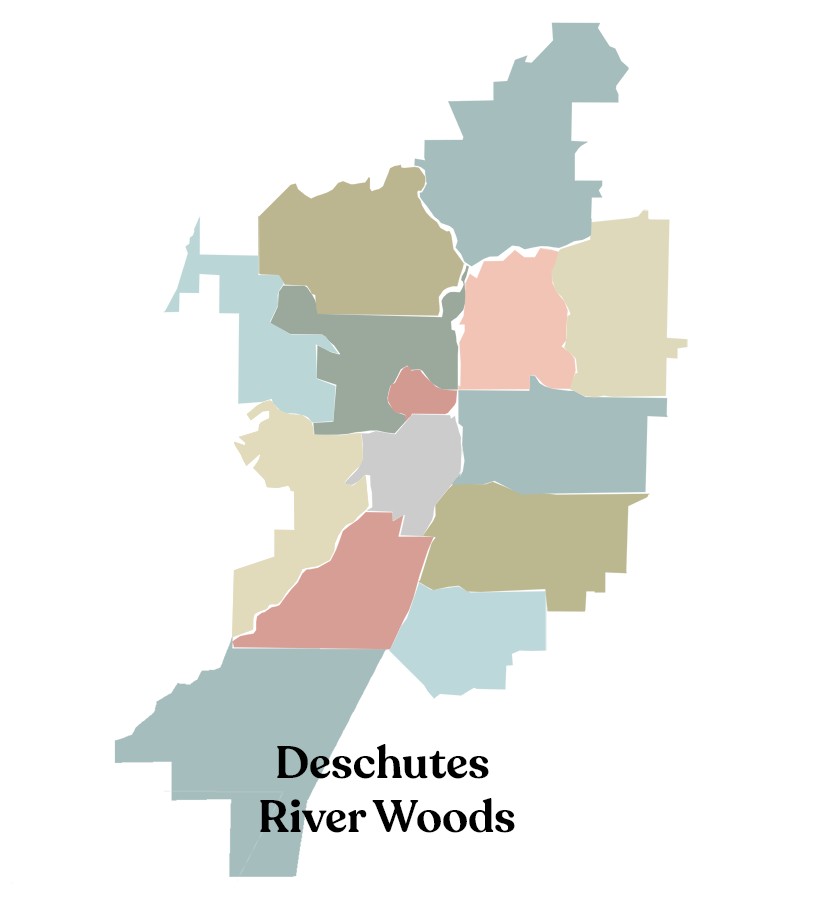
Equality of Access in Bend
It’s been 11 years since Bend voters passed of Bond Measure 9-86. Our study shows persistent inequalities in outdoor access depending on where you live. Below we rank the level of outdoor access of 13 Bend neighborhoods and Deschutes River Woods.
NOTE: we’ve updated our drive distance results. See below!
These are not yet reflected in our video, below.
Measure 1: Drive distance to Bend’s most popular destinations (V. 2)
We messed up in our first version of this study, which was originally titled “Drive Distance to the Best of Bend.” Truth is, there is no way to say what’s best! What we actually meant to measure was the average drive distance to Bend’s most visited destinations. Therefore we have released an updated version of the study. See our new methodology here.
In this new version we determined the average drive from the 14 Bend neighborhoods to the following: Good Dog Rimrock Trailhead, Shevlin Park, Riverbend Park/Farewell Bend (consolidated), Drake Park/Harmon Park (consolidated), Pilot Butte, Sawyer Park, Alpine Trail, Big Sky Park Trail, Discovery Park, Pine Nursery Park, Riley Ranch, Phil’s Trailhead, Aplenglow Park, Pioneer Park, Hollinshead Park, Ponderosa Park, Larkspur Park, Miller's Landing/McKay Park/Bend Whitewater Park (consolidated), Columbia Park, and First Street Rapids.
Results were similar to before. Neighborhoods near the footbridge — Southeast Bend, Southwest Bend, and Deschutes River Woods — face significantly longer drive distances than other areas.
Ultimately this study measures the destinations where people are actually going today. But there are wonderful additional spots all over town! We encourage everyone to try all available recreational locations in Bend — discover your new favorites today!
Measure 2: Acres per person, per neighborhood
In a public information request, BPRD provided measures of acres per person, per neighborhood. The measure does not include open spaces managed by other agencies, e.g. COID, Forest Service, State Parks, Bureau of Land Management, or other agencies. Connect Bend’s analysis indicates that adding these other agencies would not significantly change the rankings.
*Includes Rockridge Park and 50% of Pine Nursery Park
**Includes 50% of Pine Nursery Park
***Does not include portions of Shevlin park outside neighborhood
Measure 3: BPRD spending on new projects
Connect Bend analyzed BPRD’s publicly available Capital Improvement Plan (CIP) documents, an annually updated document that reports spending on new BPRD projects. Important disclaimers:
Our analysis does not claim to report overall expenditure by BPRD. Given BPRD’s cross-neighborhood activities, particularly ongoing maintenance of BPRD sites, it is not currently possible to break down this metric by neighborhood.
Therefore the ranking reflects spending on new projects only.
Connect Bend allocated each project to a relevant neighborhood. In cases in which a project spanned across multiple neighborhoods, Connect Bend allocated spending on a percentage basis based on acres in each neighborhood, or, if a trail, overall percentage of the trail length.
Connect Bend analyzed only to 2015.
CIP documents are updated annually, as such our method may miss mid-year expenses.
This analysis is not official BPRD data, but it is Connect Bend’s independent analysis of publicly available data. We will update and re-release this study should BPRD wish to refine figures reported here.
Final consolidated ranking
Giving equal weight to all three measures, we calculated average ranking, and sorted accordingly. Updated October 2023 to reflect updated drive distance rankings.
Note on Deschutes River Woods
Readers are welcome to reach their own conclusions with respect to Deschutes River Woods neighborhood, or DRW, an unincorporated area outside of both the city Urban Growth Boundary and the BPRD district boundary. Connect Bend makes no claims that either governmental entity faces legal obligations to service this area.
We also note that, to a far greater degree than any other unincorporated area in Bend, the Deschutes River Woods is continuous with and integrated with the city as a whole, and is a critical factor in planning for traffic patterns, schooling, zoning, economic development, and more.
Connect Bend urges city entities to do all it can for everyone in the Bend community.






